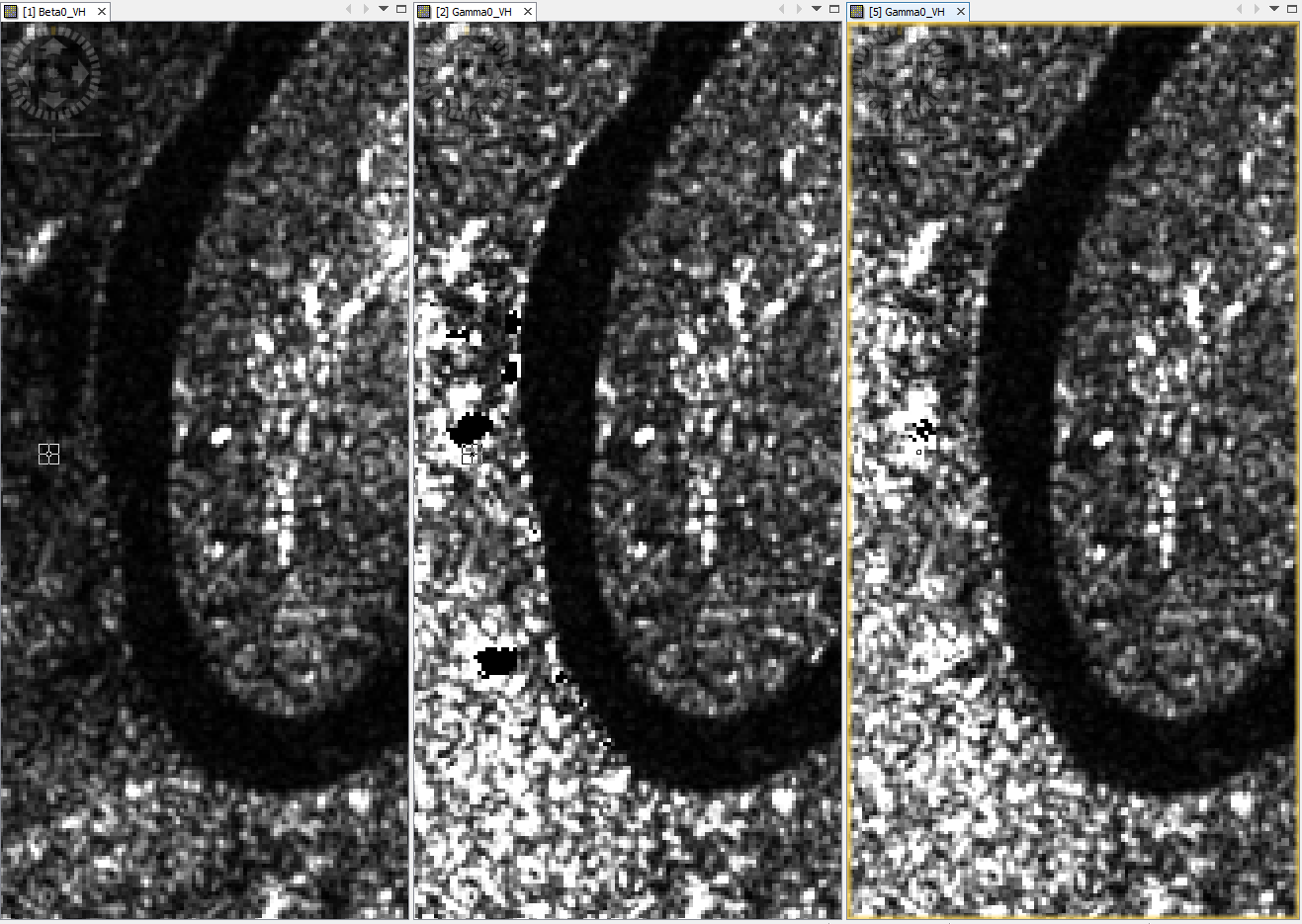Hi,
I am using SNAP 6.0 for processing S1A GRDH data and after terrain flattening my results are affected by artifacts too. Before doing the flattening there are just low intensity values located. After the flattening those areas are 0.
Similar posts:
http://forum.step.esa.int/t/artefacts-in-s1tbx-radiometric-terrain-flattening/397
http://forum.step.esa.int/t/terrain-flattening-and-converting-gamma0-to-sigma0/4864
The datasets I used are:
S1A_IW_GRDH_1SDV_20160829T054219_20160829T054244_012811_014333_61B5.SAFE
S1A_IW_GRDH_1SDV_20160302T054202_20160302T054227_010186_00F082_9C77.SAFE
Here are the processing steps:
- Remove-GRD-Border-Noise (I tried it without this step, but the results were the same)
- ThermalNoiseRemoval
- Apply-Orbit-File
- Calibration (beta naught)
- Terrain Flattening (SRTM 1 Sec HGT Auto Download; bicubic; Re-grid)
Figure 1: SRTM 1 sec
Figure 2: Dataset 20160302 after processing steps 1 to 5
Figure 3: Dataset 20160829 after processing steps 1 to 5
Figure 1: Dataset 20160302 after processing steps 1 to 4
Figure 2: Dataset 20160302 after processing steps 1 to 5 (SRTM 1sec)
Figure 3: Dataset 20160302 after processing steps 1 to 5 (SRTM 3sec): less artifacts than by using the 1sec SRTM
Thereafter I want to apply the following steps:
6. Range-Doppler Terrain Correction (SRTM 1 Sec HGT Auto Download; DEM: Bilinear Resampling; Image Resampling: Nearest Neighbour; 10m)
7. Create Stack (Resampling: None; Initial Offset: Orbit) of 10 datasets (8 x descending orbit 139; 2 x ascending orbit 88)
8. Subset
9. Multitemporal Speckle Filtering (NEST; 7x7)
10. Linear to dB
Do you have any ideas for solving this problem? I tested many combinations of the processing steps, but all results are affected. Do you need more information? After the preprocessing I am going to do a classification of tree species. which is why I want to reduce radiometric distortions. As I am using datasets of different orbits, terrain flattening should be an essential step.
Best regards
